How to take Care of a Cat Palm Plant – Cataractarum Palm or Chamaedorea Cataractarum Care and 16 step power full Growing Guide

How to take Care of a Cat Palm Plant – Cataractarum Palm or Chamaedorea Cataractarum Care and Growing Guide
How to take care of a cat palm? If you have a cat palm in your home, then you know that it’s a beautiful and unique addition to your decor. But did you know that there are specific ways to care for your cat palm so that it stays healthy and looks its best? In this blog post, we will discuss the best way to care for your cat palm so that it thrives in your environment!

If you’re looking for an easy-care houseplant that will reward you with big, bold leaves, then the cat palm (Chamaedorea Cataractarum) is a great choice. This tropical plant is native to Mexico and Central America, where it grows in moist, shady forests. In its natural habitat, the cat palm can reach heights of up to 15 feet (though it’s more likely to top out at around six feet indoors) and has a trunk diameter of up to six inches.
The cat palm’s leaves are its most distinguishing feature: they are large (up to 18 inches long), feathery, and have a ruffled edge. The undersides of the leaves are a rich green, while the tops are a lighter green. In addition to its attractive foliage, the cat palm is also prized for its edible fruit, which is a small, black, cherry-like drupe.
If you’re lucky enough to have a cat palm in your home, here are some tips on how to care for it:
– The cat palm prefers moist but not wet soil. Be sure to water it regularly, but don’t let the pot sit in water.
– The cat palm needs plenty of light, but not direct sun. Place it in a spot where it will get several hours of indirect sunlight each day.
– Fertilize your cat palm once a month with a balanced houseplant fertilizer.
– Prune off any dead or damaged leaves as needed.
If you follow these care tips, your cat palm will thrive and add beauty to your home for years to come!
Care for Cat Palm:

If you’re lucky enough to have a cat palm in your home, here are some tips on how to care for a cat palm.
Give it the right amount of light
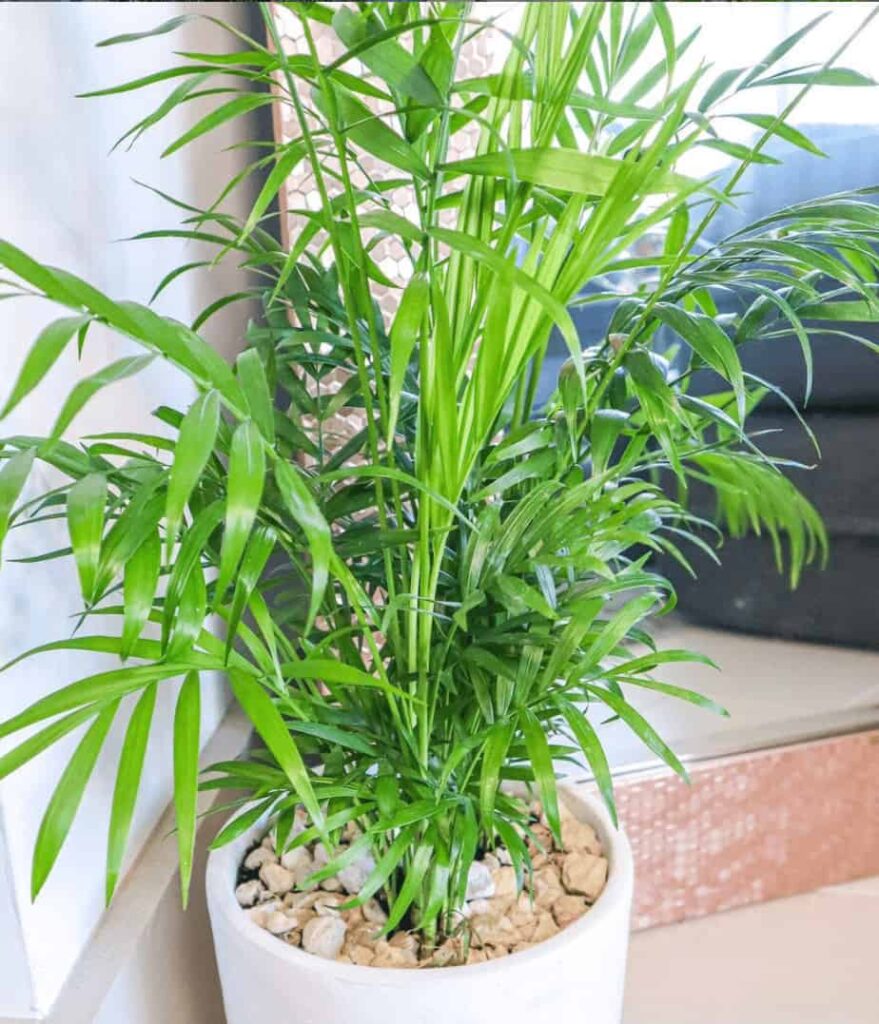
The care requirements for cat palms are relatively simple. They prefer bright, indirect light but will tolerate low light conditions as long as they protect the leaves from burning. Indirect sunlight can be provided from the east, west, or south-facing window. North-facing windows are not ideal because they don’t provide any direct sunshine.
Cat Palm Watering Requirements
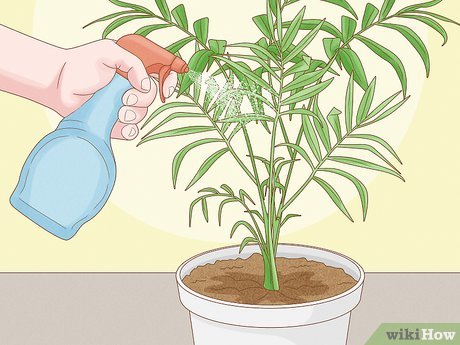
Cat palms like moist soil but should never sit in water. Allow the top inch of soil to dry out before watering and then water thoroughly until the water begins to drain from the pot’s bottom drainage holes. Do not mist cat palm leaves as this will cause them to rot.
Fertilize Cat Palm Plant Monthly

Fertilize your cat palm once a month with a balanced houseplant fertilizer diluted to half strength. Prune Damaged or Dead Leaves
Prune off any dead or damaged leaves as needed. This will help keep your cat palm healthy and looking its best.
How Much to Water a Cat Palm Plant?
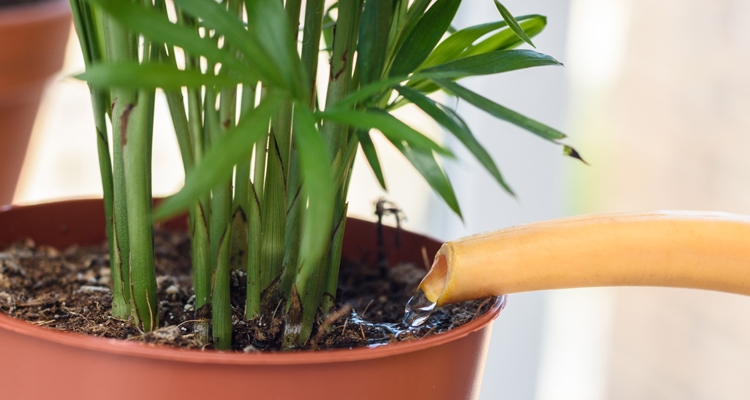
Water them when the top inch or so of soil feels dry to the touch. To prevent root rot, let the soil dry out slightly between waterings. You may need to water them more or less, depending on the humidity levels in your home.
How Much Sunlight Does a Cat Palm Need?

Cat palms prefer bright, indirect light but will tolerate low light conditions. They should be placed in a spot where they will get several hours of indirect sunlight each day.
What is the Best Fertilizer for Cat Palms?
A balanced houseplant fertilizer diluted to half strength monthly should do the trick. Follow the instructions on the fertilizer container for how much to use.
Pick the best soil for Cat Palm
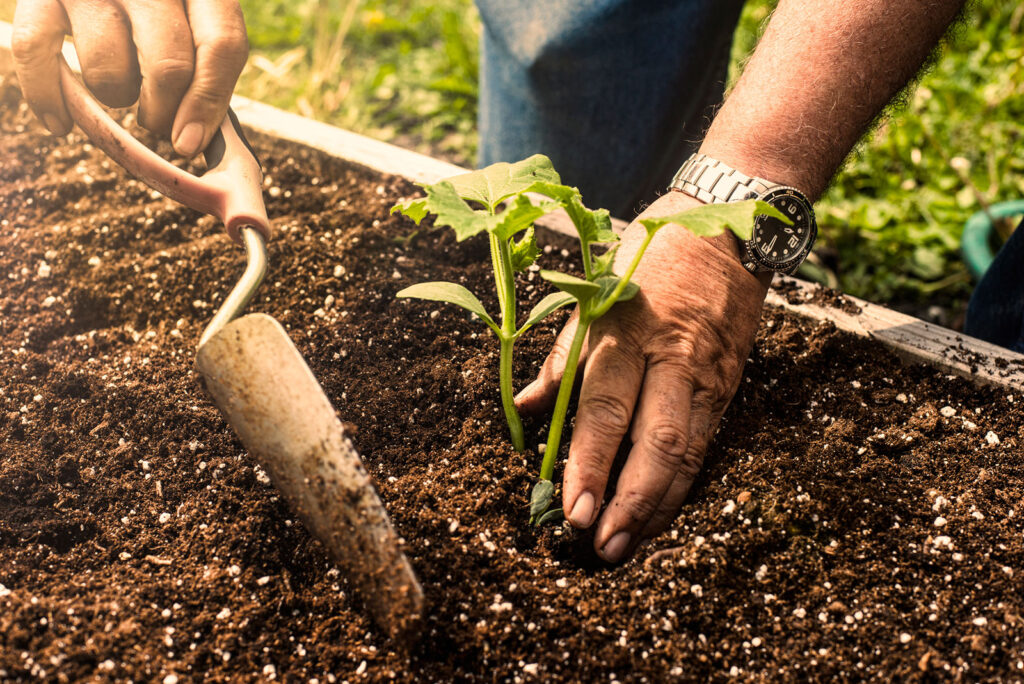
You must get soil that drains quickly. Peat moss, rather than something heavy and clay-like, can be added to the soil to keep it mild. Also, you could use a pot with a drainage hole at the bottom to assist with drainage.
What to Feed the Cat Palm Plant and How Often?
Fertilize month-to-month for the duration of the developing season with half-power liquid fertilizer. Cat palms are relatively slow growers, so they don’t need a lot of fertilizer. As a result, over-fertilizing could be detrimental and burn the roots.
Remove any Dead or Damaged Leaves
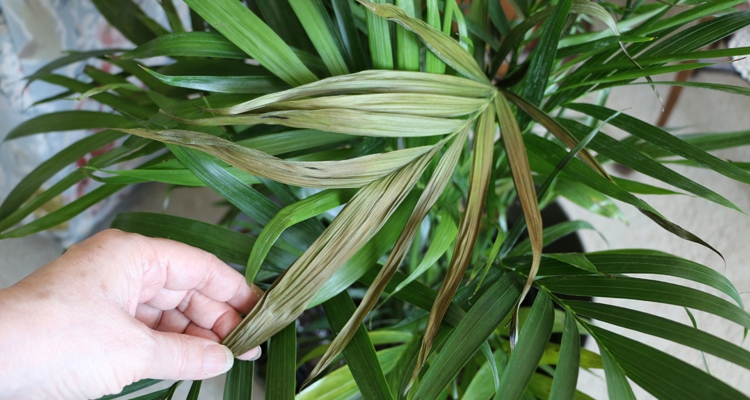
Prune off any dead or damaged leaves so that the cat palm looks great and healthy. Doing this ought to be normal routine care.
Watering Requirements for a Cat Palm

The soil must be kept moist, but not wet. Check the top inch of soil before watering and water thoroughly until the water begins to drain from the pot’s bottom drainage holes. Don’t mist cat palm leaves as it will cause them to root.
How Much Humidity Does Cat Palm Plant Need?

One potential problem you may encounter with your cat palm is browning leaves. This can be caused by several factors, including too much direct sunlight, drought stress, or cold temperatures. If you notice the leaves of your cat palm turning brown, try moving it to a brighter spot or increasing the frequency of watering.
Pests That Can Affect Cat Palm Growth
There are a few pests that can affect cat palm growth. The most common pests are mealybugs and scale insects. These pests can be difficult to get rid of, so it is important to address the problem as soon as you notice it.
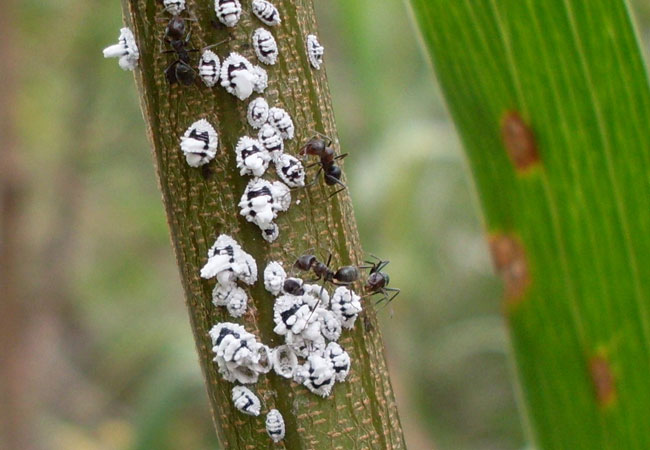
If you have a cat palm, it is important to care for it properly. Make sure to water it regularly and fertilize it every six months. If you notice any signs of pests, take care of the problem as soon as possible. Pests can cause damage to the plant and may even kill it.
If you are having trouble getting rid of a pest infestation, consult a professional. They will be able to help you get rid of the pests and keep your cat palm healthy.
Diseases Affecting Cat Palm Growth
There are a few diseases that can affect cat palm growth. The most common diseases are wilt and leaf spot. These diseases can be difficult to treat, so it is important to address the problem as soon as you notice it.

If you have a cat palm, it is important to care for it properly. Make sure to water it regularly and fertilize it every six months. If you notice any signs of disease, take care of the problem as soon as possible. Diseases can cause damage to the plant and may even kill it.
If you are having trouble treating a disease, consult a professional. They will be able to help you treat the disease and keep your cat palm healthy.
Are Cat Palms Poisonous?

No, cat palms are not poisonous. However, they can be affected by pests and diseases, so it is important to care for them properly. If you have any questions or concerns, consult a professional. They will be able to help you care for your cat palm and keep it healthy.
FAQs About Cat Palm Care
Is the cat palm easy to grow?
This is a question that a lot of people have, and the answer is…it depends. Cat palms (Chamaedorea Cataractarum) are tropical plants, so they need plenty of light and warmth to thrive. If you live in a climate where it’s warm year-round, then your cat palm will be easy to grow. But if you live in a cooler climate, you’ll need to provide your cat palm with some extra care to make sure it stays healthy.
Here are some tips for growing cat palms in colder climates:
– Make sure your cat palm gets at least four hours of direct sunlight each day.
– Keep the soil around your cat palm damp at all times; mist the leaves regularly if you can’t water them directly.
– In the winter, move your cat palm to a warm room (preferably somewhere near a sunny window) and keep the temperature around 65-70 degrees F.
– Don’t let your cat palm sit in waterlogged soil, as this can lead to root rot.
With a little bit of extra care, you should be able to grow a healthy cat palm even in colder climates!
Do Cat palms clean the air?
There is some debate over whether cat palms actually clean the air or not. Some people say that the plant removes toxins from the air, while others claim that it doesn’t do anything at all.
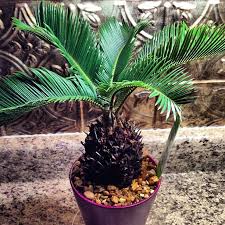
No matter which side of the argument you fall on, there are some things you can do to keep your cat palm healthy and thriving. Make sure to give it plenty of sunlight and water, and feed it regularly. If you’re looking for a low-maintenance houseplant that helps purify the air, cat palms may be a good option for you.
How do I make my cat palm bushy?
One way to make your cat palm bushy is to prune it regularly. Cut off any dead or dying leaves, and trim back the branches so that the plant has a fuller look. You can also add some organic matter to the soil to help keep it healthy. A balanced diet of water, sunlight, and nutrients will help your cat palm grow in size and lushness. If you’re looking for a full, healthy cat palm, follow these tips!
– give cat palm plenty of sunlight
– water cat palm regularly
– feed cat palm a balanced diet of water, sunlight, and nutrients
– prune cat palm regularly
– add organic matter to cat palm’s soil for the healthiest plant possible
Why are my cat palm leaves turning yellow?
There are a few reasons why your cat palm leaves might be turning yellow. One possibility is that the plant isn’t getting enough water. Make sure to water it regularly, and give it a deep soak once a month. Another reason the leaves might turn yellow is if the plant isn’t getting enough sunlight. Place it in a spot where it will get plenty of light, and rotate it every few weeks so all of the leaves get some sun. If you’re not sure what’s causing the problem, take a look at the soil. If it’s dry, add some water; if it’s wet, add some drainage material like pebbles or gravel.

No matter what causes your cat palm’s leaves to turn yellow, there are a few things you can do to correct the problem. Follow these tips, and your cat palm will be healthy and beautiful in no time!
– give cat palm plenty of sunlight
– water cat palm regularly
– feed cat palm a balanced diet of water, sunlight, and nutrients
– prune cat palm regularly
– add organic matter to cat palm’s soil for the healthiest plant possible
If your cat palm’s leaves are turning yellow, don’t worry – it’s not necessarily a sign that the plant is dying. There are a few things you can do to correct the problem and help your cat palm get back on track. Follow these tips, and your cat palm will be healthy and beautiful in no time.
Why are the tips of my cat palm leaves turning brown?
There are a few reasons why the tips of your cat palm leaves might be turning brown. One possibility is that the plant isn’t getting enough water. Make sure to water it regularly, and give it a deep soak once a month. Another reason the leaves might turn brown is if the plant isn’t getting enough sunlight. Place it in a spot where it will get plenty of light, and rotate it every few weeks so all of the leaves get some sun. If you’re not sure what’s causing the problem, take a look at the soil. If it’s dry, add some water; if it’s wet, add some drainage material like pebbles or gravel.

No matter what causes your cat palm’s leaves to turn yellow, there are a few things you can do to correct the problem. Follow these tips, and your cat palm will be healthy and beautiful in no time!
– give cat palm plenty of sunlight
– water cat palm regularly
– feed cat palm a balanced diet of water, sunlight, and nutrients
– prune cat palm regularly
– add organic matter to cat palm’s soil for the healthiest plant possible
If your cat palm’s leaves are turning yellow, don’t worry – it’s not necessarily a sign that the plant is dying. There are a few things you can do to correct the problem and help your cat palm get back on track.
Conclusion
If you are the lucky owner of a cat palm plant, congratulations! This guide will help you keep your plant healthy and thriving. Be sure to give it plenty of light (but not direct sunlight), water it regularly, and feed it monthly with a good quality fertilizer. Remove any dead or damaged leaves, and make sure the soil is always moist but never wet. With a little bit of TLC, your cat palm will thrive for years to come. Thanks for reading!
See also:
Backyard Landscaping Ideas On A Budget: 23 Inspirational Ideas
Can I Throw Neighbors’ Tree Branches Back in Their Yard?
43 Best Gift Ideas for Bird Watchers, Audubon and Bird Lovers
32 Affordable Backyard Pool Ideas on a Budget
46 Modern & Small Corner Rock Garden Ideas
How to Grow Tagetes Marigolds power full flower 7 steps Seed, Seedlings, or Garden-Ready Plants






